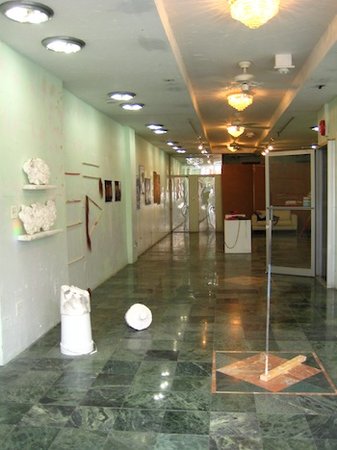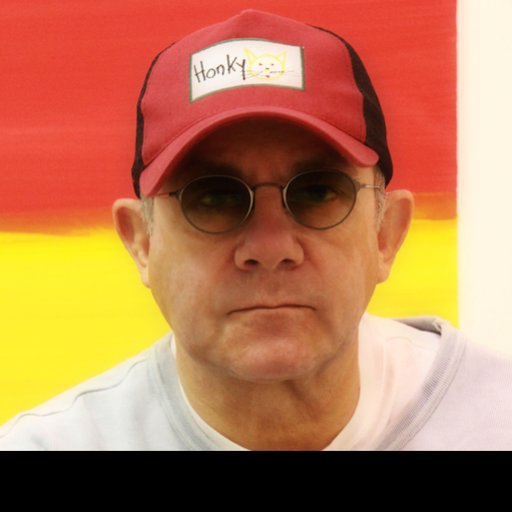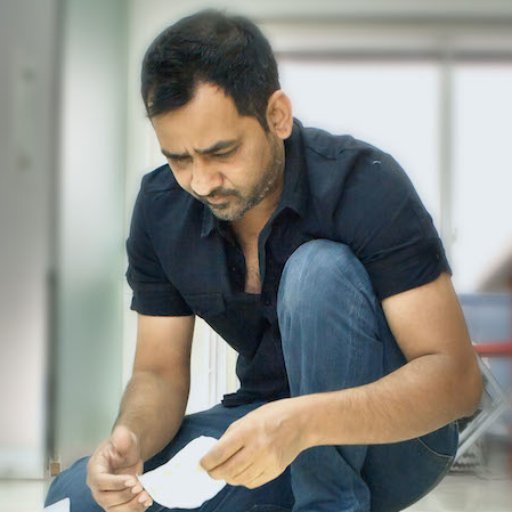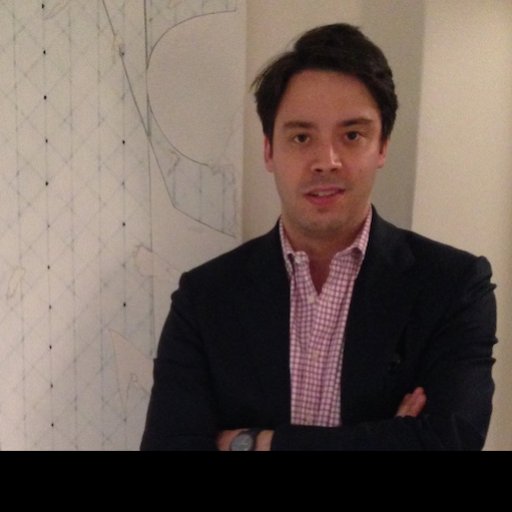Over the last few years, one of the most reliably surprising, boundary-pushing, and downright unusual art destinations in New York has been a little gallery on the Lower East Side called 47 Canal. Founded by the artist Margaret Lee and her boyfriend Oliver Newton, the space is devoted to showing art that seems beamed in from an unsettling near future: Stewart Uoo's postapocalyptic waif sculptures, Anicka Yi's surreal culinary concoctions (a soup of Teva dust, shaved sea lice, and antidepressants, say), and Ajay Kurian's pseudo-geological experiments come to mind.
An artist herself who shows at Jack Hanley Gallery—and the studio manager of Cindy Sherman on the side—Lee opened 47 Canal as the second iteration of a devil-may-care gallery and party spot she opened down the block, at 179 Canal Street. Artspace editor-in-chief Andrew M. Goldstein spoke to her about the offbeat philosophy behind her gallery, how it stays afloat in these unequal boom days, and why she is craving another financial collapse.
Related Links:
Meet the Artist: Margaret Lee on Finding Delicious Subversion in the Produce Aisle
What is the story of how your gallery came about?
The 2008 recession definitely got the ball rolling. I loved the fact that everything seemed to be falling apart. I definitely felt out of step in the previous few years, since I was doing this old-school things of being an assistant, and that wasn’t what was happening at the time among the artists who were my peers. What was happening at the time was that everyone was getting an MFA, and not just any MFA—you had to get a brand-name MFA from Columbia or Yale or UCLA.
I didn't want to be in school again, and I already had a job [working for Cindy Sherman] and was starting to meet people, so it just didn’t interest me. If you remember, the market then was very hot and a lot of young artists were getting shows and there were new galleries opening. My work wasn't even ready at that point—I'm so glad I didn't get a show because it would have been embarrassing. But when the crisis came and it all kind of stopped, I was like, "Thank god," because there was finally some space to think outside of the box and, at the same time, a group of artists seemed to be coming together in a very natural and interesting way.
I remember the day after Obama won the election, a group of artists all convened out in Joshua Tree for Amy and Wendy Yao’s Swap Meet, and I spent a few crazy days with Josh Kline, Anicka Yi, Michele Abeles, Jon Santos, Lisa Jo, Carissa Rodriguez, Debo Eilers, and other artists. It was a gathering of kindred spirits, some of whom I knew and others I just met out there. I could feel something brewing.
How did you find your first gallery space?
The building at 179 Canal is where I used to have my first office when I was working with Cindy—it was a tiny fourth-floor walk-up in a weird quiet building with a brothel and some other random businesses—and then there was a fire in late 2008. I’d walked by the second floor many times before but it was always locked behind a serious gate, so when the fire department came in and kicked open all the doors I saw it for the first time. It had green marble tiles and chandeliers, and I just fell in love with it. The landlord was this cool old Cuban guy, and I asked him if I could just do something in this space because the building was fucked—all of the water damage and ash was still everywhere. So I told him that if he wanted decent new tenants, not like the horrible previous tenants that used to be running brothels and things like that, he should let me try and get art-world people in.

The first event I threw was with James Fuentes and Gianni Jetzer from the Swiss Institute—we threw an Armory Show party. It was super fun, so I thought, "Oh, I have a party space," and I threw a few more parties, rent-free, as a marketing thing to get people into the building. At that time I thought I was getting into real estate, but instead a social space was forming—Matthew Higgs and Tim Dewitt deejayed a party I threw with Emily Sundblad, and then other parties with artists like Tim Lokiec and Gary Murphy.

Then I realized that maybe I should try organizing art shows, because throwing parties was actually way harder—the cops would come because we were running an illegal bar, noise complaints, et cetera. Josh Kline and I had become friends a few months before, so I asked him to curate the first show, and he included Amy Yao, Antoine Catala, Trevor Shimizu, Alisa Baremboym, and Anicka Yi, among others. I sort of knew some of them but not all of them, and now they're all artist represented by 47 Canal. The show was called "Nobodies New York" and it’s basically when everything really solidified.
Did you sell the work?
No. [Laughs] A lot of the work no one would even buy—it was a three-day show, it wasn't supposed to be finished work. I never sold anything at 179 Canal, but I kept convincing my landlord to let me continue using the spaces: "A few more months, a few more months!" I did a little fundraiser to raise money and I basically handed him $14,000 and said, "Look, this is all I could raise for a year, but it's up front, so just take it." So I started programming and it ran for just over a year, and it was the happiest time of my life.
And you never sold anything there at all?
We had a show called "KAYA," which was a collaboration between Debo Eilers and Kerstin Bratsch. We auctioned collaborative works that they made together for $50 to $100, but besides that I think I only sold one of Kerstin's Mylar paintings.
Did collectors come by?
No, mostly just artists and curators that I knew. I don't think I knew any collectors at that point. So when it closed I was really relieved, because I was actually more overworked then than I am now, since I was doing it all by myself and doing shows every month with absolutely no money. I was working my Cindy job just to pay for a car service or this or that for people.
So 179 closed in May 2010 and I started dating Oliver shortly after. Oliver was a regular visitor to 179 and at the time worked at Alexander & Bonin. I had never worked at a gallery, so I had no idea what I was doing, but I had a feeling that I didn’t want to throw the towel in quiet yet. Three months into dating, I asked Oliver, "Do you want to quit your job and open a gallery with me?" And he was like, "No… are you insane? We don't even know each other."
But I had a feeling, the same feeling about Oliver that I did about all of the artists that I showed at 179 Canal. So I said, "It doesn't make any sense, and it will probably take a lot of work and a lot of time, but I know your personality and set of values and taste would work perfectly with the program." Basically I was like a single mom with eight kids, being like, "Hey, don’t you want to take care of this crazy bunch? We’re all actually pretty cool!" [Laughs] But then he said, yes, of course, he wanted to do this.
Around the same time—actually a little before—I had also somehow gotten this crazy idea during a collaborative art-making session with Michele Abeles and said, “Hey, why don’t I reopen the gallery and you can be the first show.” She said yes too. So I really had to figure out how to make it happen [laughs]. We opened 47 Canal with Michele’s first solo show in New York in April 2010
I hate to ask, but did any of that sell?
Not much. It was hard. And you need to sell art, not to be rich but to help artists continue their practice. It's not about staying in a five-star hotel and living a life of luxury, it's about having the freedom to have an idea and execute it without going into debt. I felt like the first couple of sale were sympathy sales, like, "Oh, you poor kids, how cute." [Laughs] It was a trickle—our first year was really hard. We also had a strong idea of how we wanted to run our business, and most everyone we talked to said we had the worst business model, and that we were never going to make any money.
What was your businesss model?
To put the artists first. [Laughs] Which is a bad business model apparently, but that's just what we do. I would never tell an artist to make a lot of one thing that looks a certain way because that's what people want. I didn’t want a show where everything was the same size and hung evenly in this white box. What we spend on exhibitions is insane because we build more walls than I'd like to admit: "You want tinted windows? Fine, done. Oh, we had walls in this other show but you don't want those walls, so we have to tear them down and build new walls? Okay. You want different lights?" It's whatever the artist wants, and whatever will make for a flow that works. From the beginning, it was never about individual pieces but rather having conversations about developing bodies of work. Within this, not every piece can be easily digested, and that's the best part. I don't know how we got through those years to be honest. Well, I know how we got through—I worked.
You worked three jobs: the gallery, your art, and managing Cindy Sherman's studio.
Yes, out of necessity. I was happy to be able to make an honest living and use that to support something I really believed in.
When did you start showing at Jack Hanley Gallery?
I had my first show in 2011, which was a really hard time because at 47 Canal our concept was that all of our artists that we opened with would be having their first solo shows in New York—there were no group shows. And very few had been legitimized in any significant way. So while I was prepping for my first solo show, I was also complete immersed in getting all the 47 artists through their first solo shows as well.
When did you feel that your gallery was starting to gain traction, where you were getting to the point where you could breathe a little easier?
Honestly, I don't feel that we're actually there yet—the numbers still don't add up in our favor. But we can continue, and that's the most important thing. As artists, we all have to make the agreement that we're in this for a certain reason, and it's not necessarily money. Yes, it's great to make money off your sales, but you need to have realistic goals—just as dealers need to have realistic goals. Dealers also don't need to make an excessive amount of money quickly.
I think there is this notion that when one becomes a dealer, all you need is five years and then you'll have a penthouse apartment, a Mercedes, and a house in the Hamptons and you'll be flying business class and all this stuff. I don't know how people get there. But with us it was always slow and steady. I used to hand-make the after-party food so we could save money, and then a year later we could do pizza, and the next year we could do a little catered spread. It's those baby steps that show the little bits of progress.
Would you say that the market is back in full force after the recession?
I hear the market is definitely back and, frankly, I’m sick of hearing about it. Whatever is going on now doesn’t trickle down and really doesn’t cross over so much into what we are doing. It’s funny, because I suspect most people feel like they have to wait out recessions and then they can get things back to normal. I feel like I can't wait until this boom is over.
How would you describe the people who do collect from your gallery? Are there any speculators?
The collectors who support the gallery are generally extremely experienced and educated. Most of our collectors have been collecting for many, many decades, so they've always been excited by the new discovery and watching artists and programs grow. I literally have no personal experience with speculation. We all know that artworks have the potential to increase in value, but I don’t think of that as a short-term goal.
So, how would you describe the vision that you and Oliver bring to 47 Canal?
I guess what we're attracted to is people who don't feel entitled to art with a capital 'A,' in a way, and who don't feel entitled to insert themselves into a history that's already written—like, "Oh, I'm going to do Neo-Modernism." Also, a lot of the artists we show are immigrants, so Western culture isn't even theirs to mine in the first place. I realize it's that immigrant mentality that I'm so drawn to, and in a larger sense the outsider's perspective.
It's about still being uncomfortable—it's not, "Here I am, BOOM! I do this and now everyone should reward me for my decision to do 50 versions of the same thing.” Most of our artists were not trained to figure out what they're good at, to just figure out their signature style and run with it. Instead, a lot of our artists explored various things before coming to art, and that leads to really interesting ideas and conversations that address art history but also the larger world as well.
So, how do you define success for the gallery? Obviously curators are a lot of attention to you program, but what other markers of success are you hoping to achieve?
My goal is that the gallery and the artists can continue to work, thrive, grow, and expand without having to compromise, while also maintaining positive energy and staying supportive of the community. Also, would be great to never have to follow the status quo and continue to put exhibitions before product while still being able balance the selling part, which is obviously necessary.
I’ve always been inspired by how certain fashion houses maintain this balance. The energy and production put into presenting haute couture can never be recouped through selling the runway looks—this is where ready-to-wear, diffusion lines, accessories, et cetera come into play. No one can really fault a designer like Rei Kawakubo for making covetable wallets and t-shirts, because she consistently brings her A-game to the runway and is always challenging and pushing her creativity and the audience. Not all designers can do this, but the ones who do stand out. It’s the same for artists, I think.
You guys don’t really have diffusion lines.
No. [Laughs] Maybe it would be great to have a few! But, also, not everything we show at the gallery is non-archival or difficult. We try to balance this, just the way we try to balance everything else. We are not anti-commerce—I mean, we do art fairs, more art fairs than I would like. We play the game on the one hand, but we try to play it on our own terms as much as we can.
What about your program's technological overlay? It seems as if everyone is very interested in this strange kind of Internet-age fragmentation moment in a way that some other galleries are not.
It’s maybe a little easier to be idealistic about the present and the future, at least for now while the Internet is creating a lot of confusion and openings. Obviously there's a dark side to technology, but there's also an amazing side to technology that's really democratic. And yes, a lot of our artists are interested in this. Josh Kline's work takes these issues head-on, asking what we are willing to give away in order to be in step with technology and the lifestyle it often promises. Stewart Uoo and Alisa Baremboym’s addressing of the body in relationship to technology is also in this vein. Michele Abeles and Gregory Edwards work to create new “spaces,” fucking with old-school notions of dimensionality. Antoine Catala’s fascination is with language, signs, and symbols within the digital age. Nolan Simon’s exploration of image culture… I could go on and on. But I’d like to clarify that we are not a Post-Internet gallery. It’s not about the internet—it’s about the drastic changes that are effecting the contemporary human condition.
So, how do you define success for the gallery? Obviously curators are a lot of attention to you program, but what other markers of success are you hoping to achieve?
My goal is that the gallery and the artists can continue to work, thrive, grow and expand without having to compromise while also maintaining positive energy and staying supportive of the community.
In the longer term, do you ever plan on putting the bulk of your energies behind either the gallery or making your own art?
My therapist would love to hear how I answer this question, and I don’t know if I can answer that. I really liked my last show at Jack Hanley, which is a very new thing for me to feel. It took me five years to get that statement and it feels good to have kept at it and it would be nice to keep on that trajectory. Anyway, I don’t know if I’m very good at the selling part of being a dealer, but I really still do enjoy the conversations leading up to shows and installing. The artists at 47 are some of the most important people in my life. It’s hard to step away.
Do you have any more shows of your work on the horizon?
It's funny because I vowed not to do anything after my Jack Hanley show, but that didn't happen—I’m in four group shows and doing a summer photo residency so all I have to do is get through this summer, and then I'm really going to say no to everything. [Laughs]
























